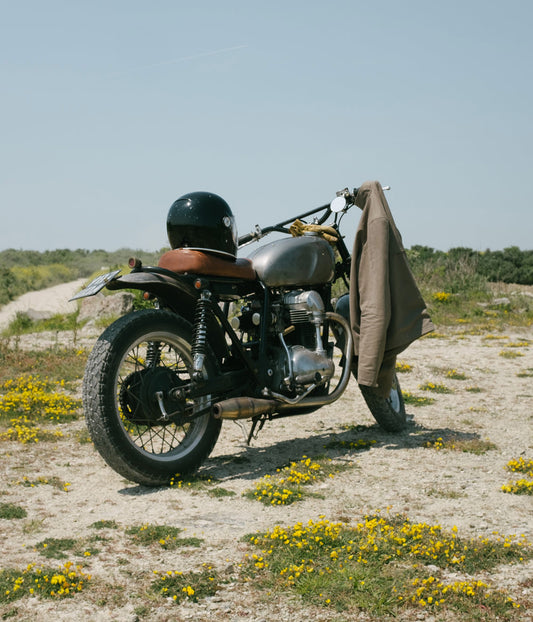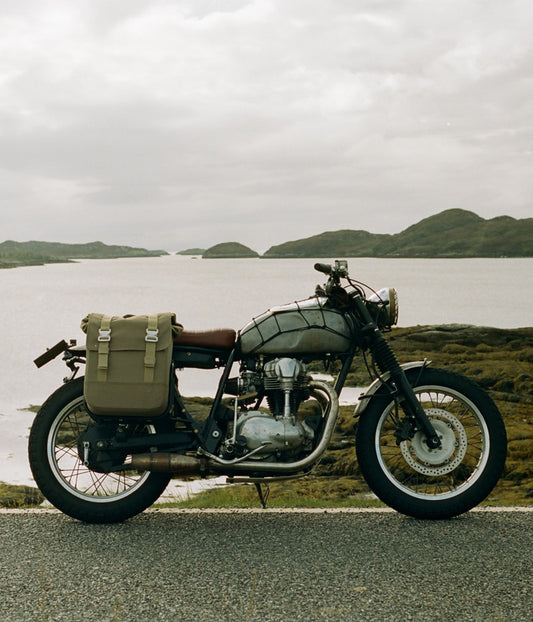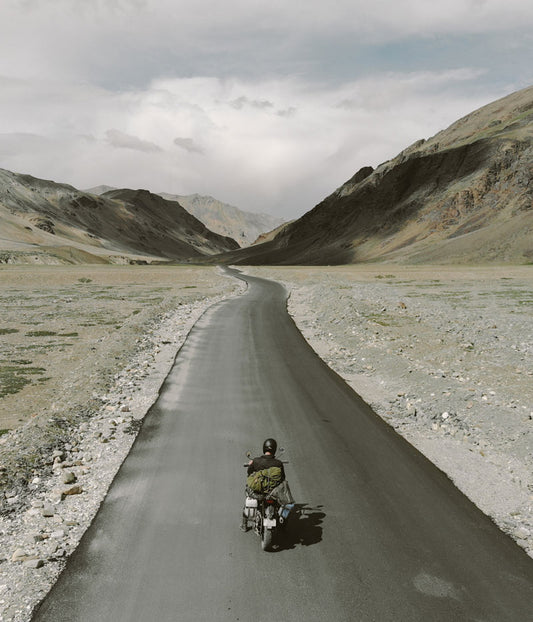Eversholt MkII : Why Waxed Cotton
A BRIEF HISTORY:
Waxed fabrics date back to the 15th century when fish oil and grease were rubbed onto sails - making them more efficient in dry weather and less absorbent in the wet. From the moment the weather-proof properties of this fabric were known, mariners have fashioned clothing from sailcloth.
Oilskins from the 1850s onwards were made from cotton coated with linseed oil. In very cold conditions this fabric would become rigid and so, in the 1920s, a new formula was developed - replacing linseed with a paraffin-based oil. A decade later waxed cotton was used for the first time in motorcycle clothing, by the fifties it was the preferred choice.
With the subsequent advances in surface coatings and synthetic waterproof fabrics; you may wonder why, in the 21st century, we’ve chosen to use waxed cotton for the Eversholt MkII. The reasons are three-fold:
BUILT TO LAST:
In motorcycle clothing, the waterproof alternative to waxed cotton is a laminated synthetic fabric. As an outer shell this performs brilliantly - until it gets a puncture. Because the industrial machinery needed for repairs isn’t widely available; if the outer layer of a jacket begins to leak, you either have to accept that you’ll get wet, or buy a replacement.
In contrast, waxed cotton can be easily reproofed any number of times at home. If paired with a seam-sealed waterproof liner (like the Eversholt MkII), not only do the two layers combine to keep you bone-dry, but the hardier outer fabric protects the waterproof membrane below. Throughout testing, we’ve found that waxed cotton has proven tough enough to handle all riding conditions; be it on a short trip across town, or days spent following off-road trails through the mountains.
BETTER WITH AGE:
The first hurdle in creating a jacket that will last for years, is to be certain that it functions properly and can be easily maintained. The next is to ensure that the construction is of the highest quality. The final part is choosing fabrics and hardware that will get better with age.
Over years, waxed cotton develops a patina unlike any other fabric - marks become a record of the trips you’ve been on. Below the outer shell, the Eversholt MkII has a separate seam-sealed waterproof liner and Hybrid-Dyneema abrasive layer. Constructing a jacket in this way means that, regardless of how worn the waxed cotton looks, the performance of the jacket remains unchanged.
If you want to regularly re-proof the fabric and keep the Eversholt MkII in its original condition, you can. If you want to let the fabric show the signs of the trips you’ve been on, you can. How it looks is up to you.
MORE SUSTAINABLE:
Waxed cotton is coated in a petroleum-based oil. We appreciate that any fabric which uses a material derived from fossil fuels may not appear sustainable, however, there are several other factors to consider.
Laminated waterproof fabrics (the alternative to waxed cotton) are often woven from virgin synthetic yarns which, are also made from fossil fuels. The adhesive used to bond the layers of this fabric together means that it can’t be recycled and because industrial machinery is needed for any repair, fixing a puncture is almost impossible. This means that at the end of a relatively short lifecycle, a jacket made from a laminated waterproof fabric is destined to become landfill.
On the other hand, waxed cotton can be easily maintained at home - extending the garment's life. By having a separate waterproof liner, if on the rare occasion a jacket goes beyond the point of repair, it’s possible to disassemble the garment and recycle the natural fibres.
Currently, there are a selection of new environmentally friendly wax coatings being developed. The Eversholt Jacket MkII is designed to last for many years; by the time it will need to be re-proofed these more sustainable options will be widely available. On balance, we believe this is currently the most sustainable fabric choice for a motorcycle jacket.
---
WORDS + PHOTOGRAPHS: ASHLEY WATSON









